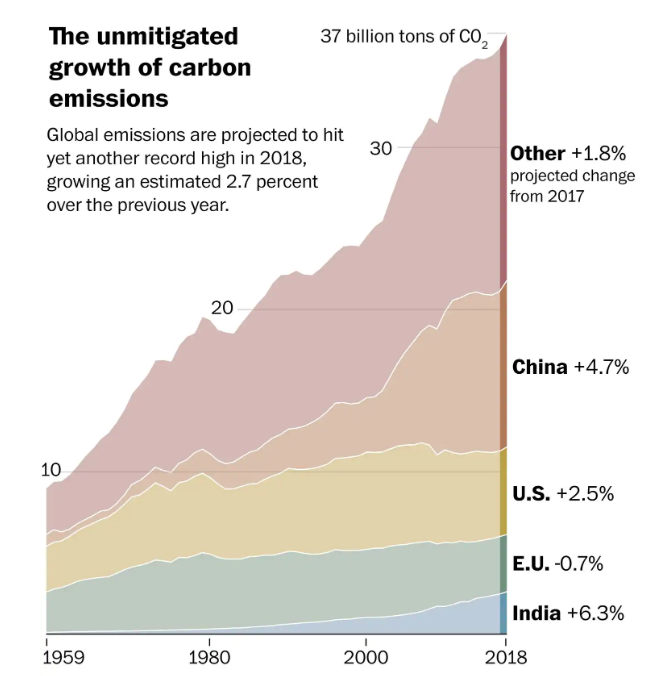The Planetary Patient
Posted on | February 12, 2019 | Comments Off on The Planetary Patient

Mike Magee
In 2005, I published a book called Healthy Waters in an attempt to raise environmental health and the deteriorating “planetary patient” as a pressing health care issue. My efforts were only modestly successful.
Chapter 8 in the book was titled “Natural Water Disasters” and summarized the costs in human life and fortune as a result of global warming and environmental degradation.
At the time, no natural disaster had generated more powerful and destructive images than did the tsunami that struck Asia and Africa in December of 2004. That single event, in dramatic fashion, illustrated both the power of water and the vulnerability of coastal and river basin populations.

At the time , CO2 levels were 380 parts per million. Now 13 years later, they have risen to 410 ppm. In the age of Trump, manufacturers global carbon emissions have risen from 27 billion tons of CO2 a decade ago to 37 billion tons of CO2 in 2018.
A recent article in the Washington Post on the topic is simply headlined, “We are in trouble.” The Paris Accord had us heading in the right direction with global emissions flat between 2014 and 2016. But in 2017, global emissions rose 1.6% and in 2018 grew 2.7%. In that year, US emissions grew 2.5% while EU emissions declined -1%
Outlining the damage caused by global warming already to our planet would take more room than we have here. In fact, the federal government delivered a 1,700 page congressionally mandated climate impact update to Trump on Thanksgiving, 2018, which left little room for thanks. This came one month after the President’s appearance on 60-minutes where he said, “I don’t know that it’s man-made” (and that the warming trend) “could very well go back.”
Of note in the report: The continental U.S. is 1.8 degrees F. warmer and our seas 9 inches higher than they were 100 years ago.
You don’t have to convince Miami’s Chief Resilience Officer, Susanne Torriente, that there’s a problem. She said, “We don’t debate who caused it. You go outside, the streets are flooded. What are you going to do about it? It’s our reality nowadays. We need to use this best available data so we can start making decisions to start investing in our future. … It shouldn’t be that complicated or that partisan.”
A decade ago, New York Times columnist, Tom Friedman, launched the term “Green New Deal” covering a range of activities he thought might treat the planetary patient’s environmental illness.
The term has now been picked up by Rep. Alexandria Ocasio-Cortez (D-NY) to encompass a range of progressive goals including climate related initiatives. Some claim it will be a litmus test for Democrats, while others predict it will be their demise.
But as the victims of the recent California fires could easily attest, the risk is growing. Back in 2006, I wrote, “Absent preparedness, the losses are complex and considerable, measured in human life and the loss of social, economic and environmental capital. Such disasters are increasingly magnified through human error, can occur out of nowhere, and generate highly uncoordinated responses. Poor and marginalized populations are most often the victims with secondary down cycling of health status a predictable end effect.”
It was true then, and even more so now.
Tags: Carbon levels > clean energy > global warming > trump > US climate Report


